Search
Did you mean: Chiron?
Search Results

Article
The Ancient Celtic Pantheon
The ancient Celtic pantheon consisted of over 400 gods and goddesses who represented everything from rivers to warfare. With perhaps the exception of Lugh, the Celtic gods were not universally worshipped across Iron Age Europe but were very...
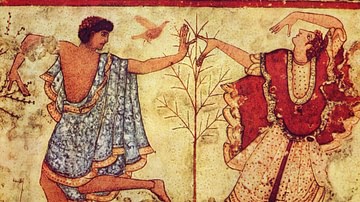
Article
Etruscan Clothing
The clothing of the ancient Etruscans, a civilization which flourished in central Italy between the 8th and 3rd century BCE, can be seen in many media of their art including wall paintings, bronze sculpture, stone relief carvings, and painted...

Article
Etruscan Bronze Sculpture
The Etruscans produced bronze goods going back to the Villanovan period (1100-750 BCE) and used the material for all manner of objects, but it is their figure sculptures which have become some of the star attractions in museums worldwide...

Image
Red-figured Hydria - Dance Training Session
Red-figured hydria (water-jar) displaying a dance-training (gymnopaida) session. Two young girls practice dancing under the supervision of a female and a male tutor. The girls wear short tunics (chiton) and take identical steps towards each...

Image
Odysseus and the Sirens (NAM, Athens, 1130)
NAM, Athens, 1130. Late 6th century BCE. This lekythos (perfume vessel) depicts the story of Odyssey, 12, where Odysseus is tied to his ship's mast in order to hear the music of the sirens, but to be restrained from straying into their danger...
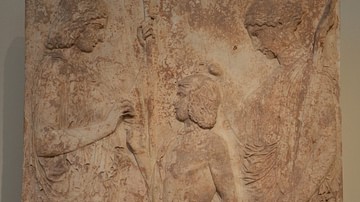
Image
Eleusinian votive relief
This is the largest and most important votive relief found at Eleusis. It represents the Eleusinian deities in a scene of mysterious rituel. On the left Demeter, clad in a peplos and holding a scepter in her left hand, offers ears of wheat...
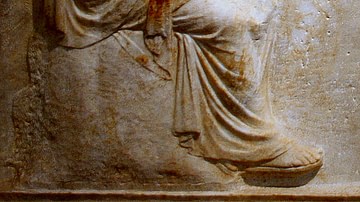
Image
Apollo, detail from NAM, Athens, 215.
Detail of Apollo from NAM, Athens, 215. He is seated on a tree stump, wearing chlamys and chiton, and sandals. In his left hand he rests his seven string lyre (the stings would have been painted; the number of tuning pegs gives their frequency...
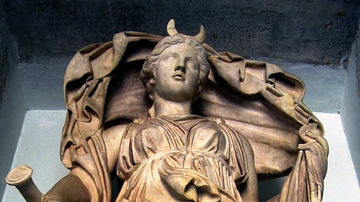
Image
Roman Statue of Luna
An early Imperial (1st Century BCE - 1st Century CE) statue of Luna, the Roman goddess of the moon. The statue is a Roman copy of a 4th Century BCE Greek statue of Selene, Luna's Greek counterpart. The goddess is portrayed wearing a billowing...
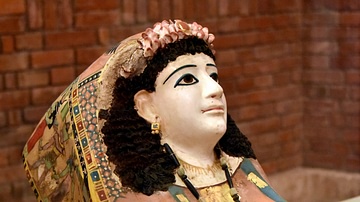
Image
Mummy Mask from Early Roman Egypt
Stucco on linen mummy mask of a woman dating to the early Roman period, beginning of the 1st century CE. The headdress, earrings, two necklaces, rings, and bracelets were prominently imitated. The black curly hair was imitated from dyed flax...

Image
The Centaur Frieze of the Mausoleum at Halicarnassus
This is a marble slab of the so-called Centaur frieze of the Mausoleum at Halicarnassus, also known as the Tomb of Mausolus. The whole frieze depicts a violent conflict between Greeks and Centaurs. Here on this slab, we can recognize 3 figures...